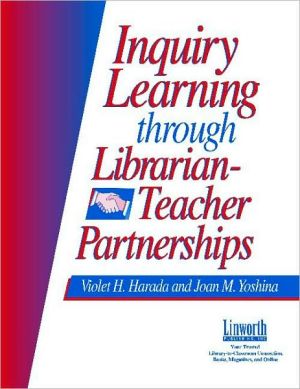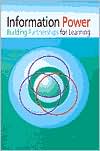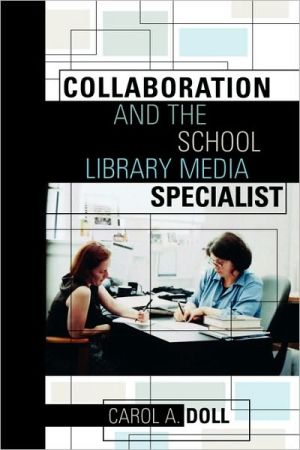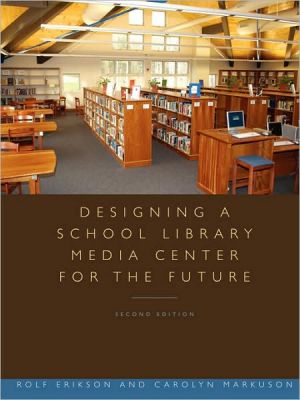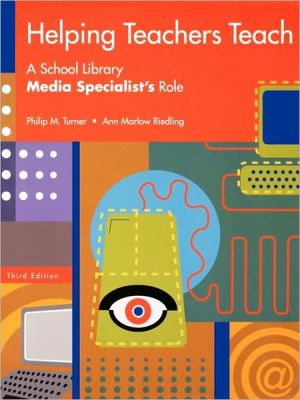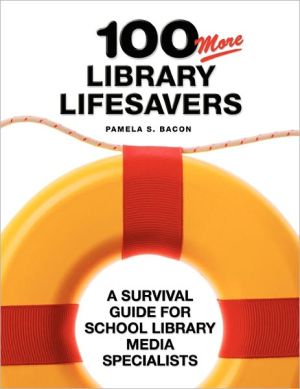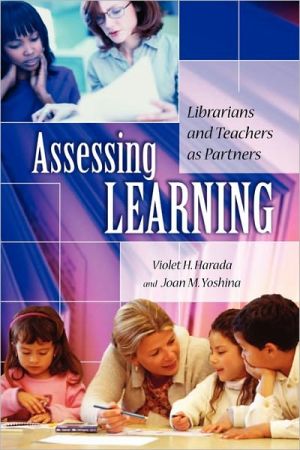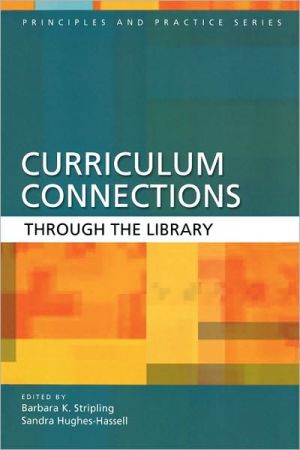Inquiry Learning Through Teacher-Librarian Partnerships
Begin a school-wide movement toward collaborative instruction and ultimate student success! Challenge yourself and teachers to build learning environments that focus on realistic issues and themes. Build a strong case for the role of the library media specialist in implementing curriculum changes.
Search in google:
Begin a school-wide movement toward collaborative instruction and ultimate student success! Challenge yourself and teachers to build learning environments that focus on realistic issues and themes. Build a strong case for the role of the library media specialist in implementing curriculum changes. School Library Journal Three colorful scenarios of what inquiry learning looks like at elementary, middle, and high school levels open the book, and three extensively detailed inquiry-based projects conclude it. Each of the first six chapters outlines major elements in the design of such a curriculum. The authors describe what happens in an inquiry-based classroom and library media center and show teachers/librarians how to develop a curriculum that incorporates essential questions and important habits of mind, all aligned with content standards. One chapter offers a prescription for collaboration, while another moves into inquiry-based instruction, which looks beyond questions of what, when, and where into the realms of why and what if. The authors delve into search models, instructional strategies, and diversity issues. The volume contains everything a teacher-librarian team would need to create, teach, research, and assess major interdisciplinary units. Each unit fills 20 pages with excellent reproducible forms, teaching strategies, search models, lesson plans, assessment rubrics, and ideas for creative presentations. The elementary project focuses on animal adaptation, middle school is avoiding harmful substances, and the high school unit is on global issues. The book concludes with specific implementation strategies, samples of school-wide goals, and matrixes for developing grade-level literacy-skills alignments and professional-development suggestions. While the gestalt of inquiry learning feels subversively open-ended and creative in these days of standardized tests and lockstep curricula, the required elements are all actually there. Wonderful teachers could take this book, soar with it, and still manage to cross and dot the requisite t's and i's.-Mary R. Hofmann, Rivera Middle School, Merced, CA Copyright 2004 Reed Business Information.
\ From the Publisher"This instructional and informative guide provides the tools to implement an inquiry-based model into your school's research projects. Stressing the importance of the librarian-teacher partnership, the lessons and activities highlight those skills that have been found to be most important in teaching research to students—those that will transfer to real life situations, such as problem solving. The skills and attributes required for successful collaboration are overviewed, as well as the specific skills both the classroom teacher and library media specialist bring to each project. In each of three chapters, an elementary, middle school, and high school level project are each outlined in detail including the summary of the project, learner goals, the standards addressed, and teaching strategies and procedures. Each of these projects could easily be adapted. Readers looking to truly incorporate the skills of the media center into classroom projects will find this volume filled with solid supporting evidence and the means to collaborate with classroom teachers on meaningful projects. Highly Recommended."\ -\ Library Media Connection\ \ \ \ \ \ School Library JournalThree colorful scenarios of what inquiry learning looks like at elementary, middle, and high school levels open the book, and three extensively detailed inquiry-based projects conclude it. Each of the first six chapters outlines major elements in the design of such a curriculum. The authors describe what happens in an inquiry-based classroom and library media center and show teachers/librarians how to develop a curriculum that incorporates essential questions and important habits of mind, all aligned with content standards. One chapter offers a prescription for collaboration, while another moves into inquiry-based instruction, which looks beyond questions of what, when, and where into the realms of why and what if. The authors delve into search models, instructional strategies, and diversity issues. The volume contains everything a teacher-librarian team would need to create, teach, research, and assess major interdisciplinary units. Each unit fills 20 pages with excellent reproducible forms, teaching strategies, search models, lesson plans, assessment rubrics, and ideas for creative presentations. The elementary project focuses on animal adaptation, middle school is avoiding harmful substances, and the high school unit is on global issues. The book concludes with specific implementation strategies, samples of school-wide goals, and matrixes for developing grade-level literacy-skills alignments and professional-development suggestions. While the gestalt of inquiry learning feels subversively open-ended and creative in these days of standardized tests and lockstep curricula, the required elements are all actually there. Wonderful teachers could take this book, soar with it, and still manage to cross and dot the requisite t's and i's.-Mary R. Hofmann, Rivera Middle School, Merced, CA Copyright 2004 Reed Business Information.\ \
